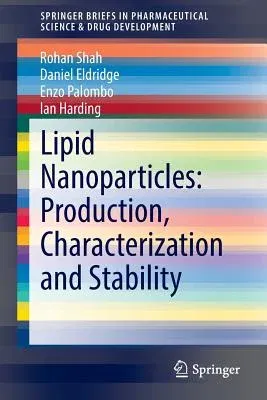What are lipid nanoparticles? How are they structured? How are they
formed? What techniques are best to characterize them? How great is
their potential as drug delivery systems? These questions and more are
answered in this comprehensive and highly readable work on lipid
nanoparticles. This work sets out to provide the reader with a clear and
understandable understanding of the current practices in formulation,
characterization and drug delivery of lipid nanoparticles. A
comprehensive description of the current understanding of synthesis,
characterization, stability optimization and drug incorporation of solid
lipid nanoparticles is provided. Nanoparticles have attracted great
interest over the past few decades with almost exponential growth in
their research and application. Their small particle size and subsequent
high surface area make them ideal in many uses, but particularly as drug
carrier systems. Nanoparticles made from lipids are especially
attractive because of their enhanced biocompatibility imparted by the
lipid. The work provides a detailed description of the types of lipid
nanoparticles available (e.g. SLN, NLC, LDC, PLN) and how they range
from imperfect crystalline to amorphous in structure. Current thoughts
on where drugs are situated (e.g. in the core, or at the interface) and
how this can be manipulated are discussed. The many techniques for
production, including the author's own variant of microwave heating, are
fully discussed. Techniques for measuring arguably the most important
characteristics of particle size and polydispersity are discussed, along
with techniques to measure crystallinity, shape and drug capacity.
Finally, a full chapter on techniques for measuring stability, both in
the absence and presence of drugs, is discussed, along with suggestions
on how to optimize that stability. This work appeals to students of
colloid science, practitioners of research into drug delivery and
academics alike.

